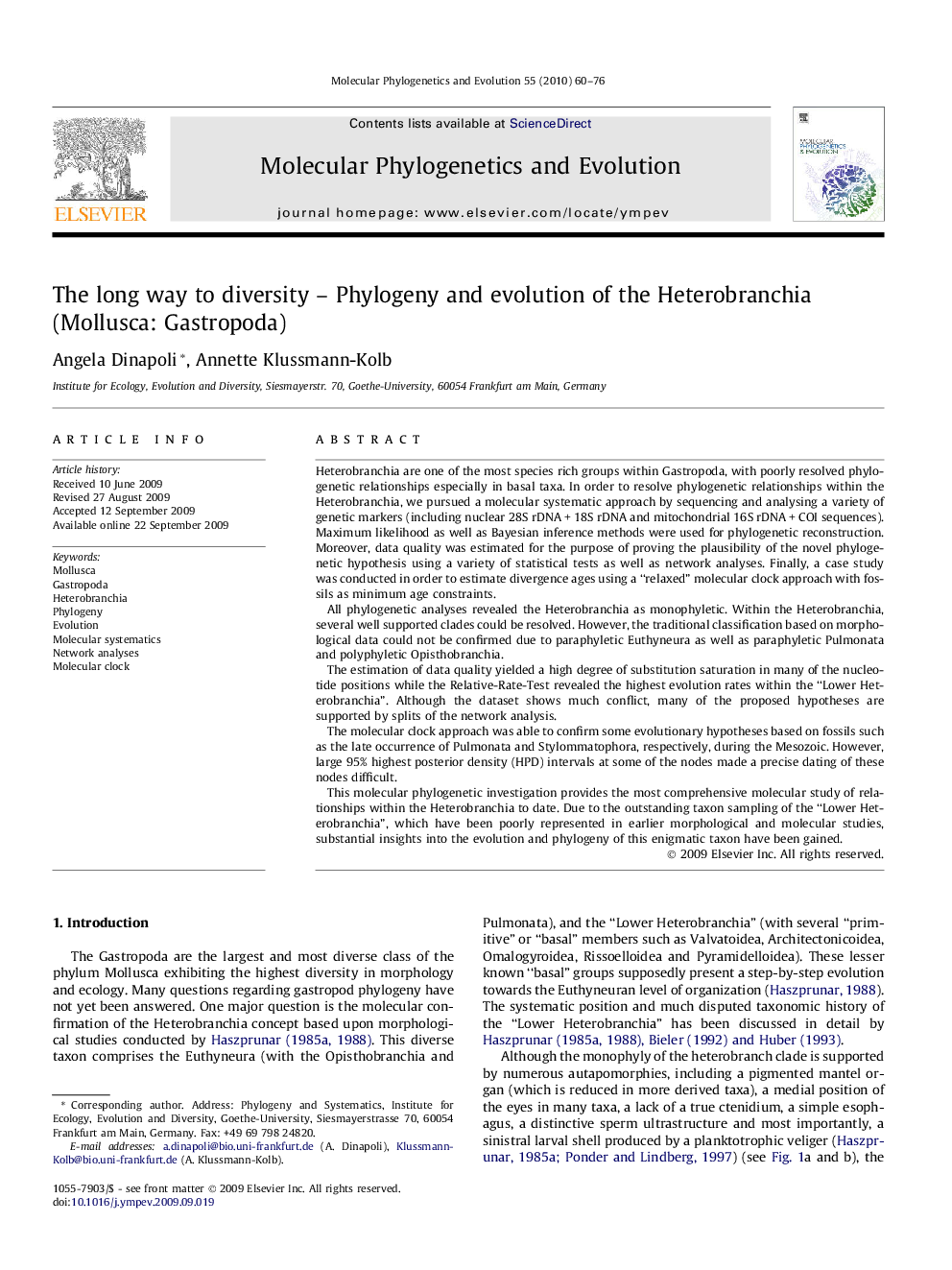| Article ID | Journal | Published Year | Pages | File Type |
|---|---|---|---|---|
| 2834831 | Molecular Phylogenetics and Evolution | 2010 | 17 Pages |
Heterobranchia are one of the most species rich groups within Gastropoda, with poorly resolved phylogenetic relationships especially in basal taxa. In order to resolve phylogenetic relationships within the Heterobranchia, we pursued a molecular systematic approach by sequencing and analysing a variety of genetic markers (including nuclear 28S rDNA + 18S rDNA and mitochondrial 16S rDNA + COI sequences). Maximum likelihood as well as Bayesian inference methods were used for phylogenetic reconstruction. Moreover, data quality was estimated for the purpose of proving the plausibility of the novel phylogenetic hypothesis using a variety of statistical tests as well as network analyses. Finally, a case study was conducted in order to estimate divergence ages using a “relaxed” molecular clock approach with fossils as minimum age constraints.All phylogenetic analyses revealed the Heterobranchia as monophyletic. Within the Heterobranchia, several well supported clades could be resolved. However, the traditional classification based on morphological data could not be confirmed due to paraphyletic Euthyneura as well as paraphyletic Pulmonata and polyphyletic Opisthobranchia.The estimation of data quality yielded a high degree of substitution saturation in many of the nucleotide positions while the Relative-Rate-Test revealed the highest evolution rates within the “Lower Heterobranchia”. Although the dataset shows much conflict, many of the proposed hypotheses are supported by splits of the network analysis.The molecular clock approach was able to confirm some evolutionary hypotheses based on fossils such as the late occurrence of Pulmonata and Stylommatophora, respectively, during the Mesozoic. However, large 95% highest posterior density (HPD) intervals at some of the nodes made a precise dating of these nodes difficult.This molecular phylogenetic investigation provides the most comprehensive molecular study of relationships within the Heterobranchia to date. Due to the outstanding taxon sampling of the “Lower Heterobranchia”, which have been poorly represented in earlier morphological and molecular studies, substantial insights into the evolution and phylogeny of this enigmatic taxon have been gained.
